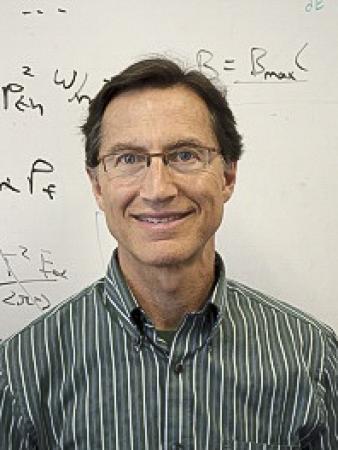
Bruce Lipschultz
Bruce Lipschultz
York University
Wednesday, October 4, 2017
3:00pm
Abstract: The low temperature boundary layer plasma (Scrape-Off-Layer or SOL) between the hot core and the surrounding vessel determines the level of power loading and erosion and implantation of material surfaces, and thus the viability of tokamak-based fusion as an energy source. This study using the JET tokamak explores several mechanisms affecting the formation of flattened density profiles, the so-called density shoulders, in the low-field side (LFS) SOL. We find that changes in parallel to the magnetic field collisionality do not always correlate with density shoulder formation - in fact, N2 seeding of the plasma leads to reduction of shoulder amplitude while increasing parallel collisionality. We find that the most consistent correlator with shoulder formation is the amount of recycling in the divertor plasma as measured by Balmer alpha light for attached plasmas. We also find that changes of the divertor configuration from horizontal to vertical target reduces shoulder amplitude and delays its occurrence to higher core operating densities. These last two observations could be interpreted as meaning that changes in recycling affect flows from the SOL to the divertor - effectively reducing the loss of ions out of the SOL.
Bio: Professor Lipschultz’s research focus is on the plasma physics of low temperature, moderate density plasmas at the edge of fusion energy related devices. He has worked extensively on tokamak magnetic confinement devices including the discovery and initial model for the ‘MARFE’ phenomenon, a unique combination of atomic and classical transport physics, which plays a role in fueling and density limits in tokamaks. He developed the vertical plate divertor design, now ubiquitous in divertor tokamaks. His research has contributed to the understanding and development of the use of atomic processes to remove energy and momentum from the tokamak exhaust plasma as well as the applicability of high-Z materials (e.g tungsten) for plasma interaction surfaces.